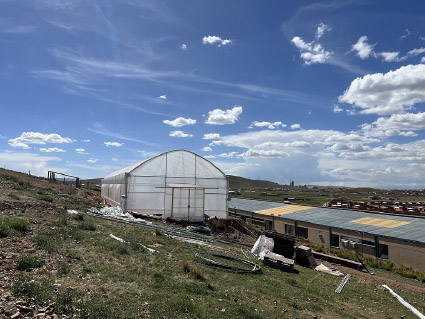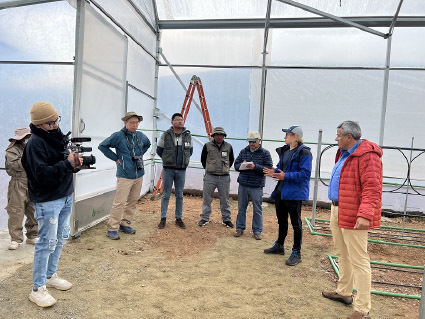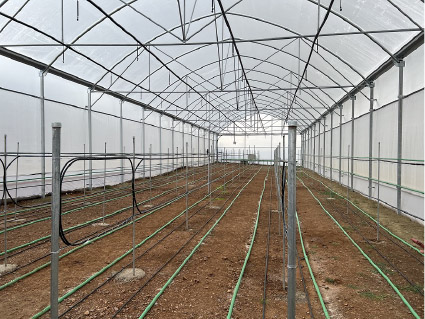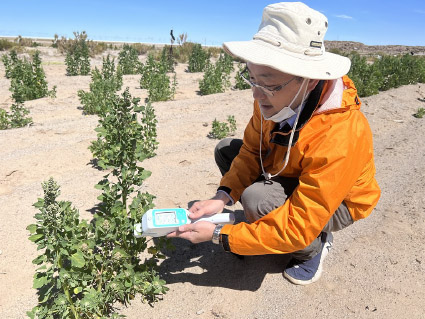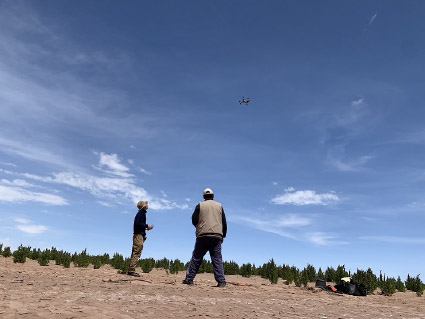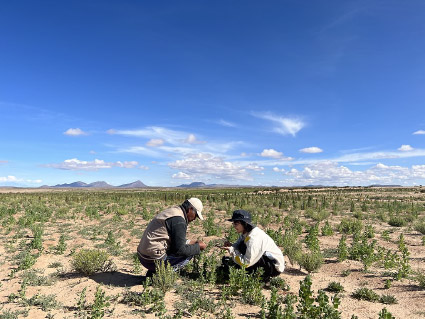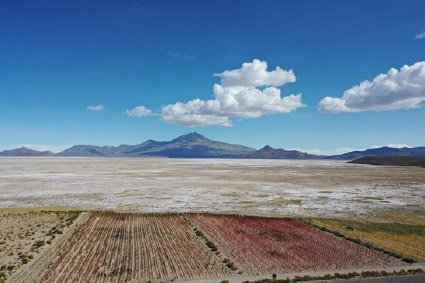2023.Mar Bolivia Business Trip Report
During this trip to Bolivia, we reviewed the progress of all research project tasks and discussed problems and future plans at the test plots.
For Task 1, we worked with PROINPA to collect seed and leaf samples of cultivated quinoa (Chenopodium quinoa), wild quinoa (C. quinoa ssp. melanospermum), and their wild relatives (C. petiolare) around Lake Titicaca, Oruro, and Salar de Uyuni. leaf samples were collected. Furthermore, the main mission of this trip was to systematize the entire process from plant collection to data acquisition, which was the main mission of Issue 1, so that it could be carried out smoothly.
For Task 2, we conducted a survey of the marginal areas where quinoa can be cultivated. In the Viacha field, we sampled F2 lines under cultivation and conducted the experiments necessary for genome analysis at UMSA with local staff to establish the basis for genome analysis.
In addition to Bolivia, this trip also took us to the Temuco region of Chile, where lowland quinoa is used as a base breeding material, to investigate the cultivation environment and utilization of quinoa.
In Task 3, we conducted a yield survey together with aerial drone photography at the project's quinoa test plots and other sites to accumulate data for the development of yield estimation technology. We also conducted a survey of daily changes in stomatal aperture of quinoa along the shores of Salar de Uyuni.
For Issue 4, a field workshop (Dia del Campo) was held on March 17 in Chita and Chacala in the Uyuni area as part of the technology transfer. In addition, a platfarm for sharing technical information on quinoa via SNS (Whatsapp) was launched and began operating on March 2. In addition, during a survey conducted in the cultivation areas around Temuco, Chile, we exchanged information with the Mapuche people who are responsible for quinoa cultivation and established a network.
Greenhouse Completion Ceremony
Greenhouse Completion CeremonyThe long-awaited large-scale greenhouse was finally completed on March 20, 2023, at the PROINPA Viacha test site, attended by the PROINPA Foundation and the Japanese research team. The greenhouse was constructed by Orkidea Andina. The greenhouse can automatically adjust the temperature by opening and closing the side windows and by heating water, and can also automatically control the irrigation conditions by drip irrigation and sprinkler irrigation. This allows for the cultivation of quinoa even during the winter, thus speeding up the process of quinoa breeding.
The Secret of Quinoa's Drought Tolerance on the Shores of Salt Lake Uyuni
The soil along the shores of Bolivia's Salar de Uyuni is not only highly saline, but also extremely dry, with an annual rainfall of approximately 200 mm. For this reason, it is not possible to grow even barley or wheat, and quinoa is the only crop that can be grown here. One clue to why quinoa can be grown under such drought-stressed conditions is being obtained by measuring daily changes in stomatal opening of quinoa growing in farmers' fields. We measured stomatal opening in the field from 8:00 am to 4:00 pm under some of the world's highest solar radiation intensity and driest conditions, and the measurements were a true test of stamina, reminding us once again of the strength of quinoa.
Toward a Simplified Estimation of Quinoa Growth and Yield
Quinoa in Bolivia is subjected to diverse environmental stresses, and the slightest condition can cause growth instability, so quinoa growth is uneven even within a single field, making it very difficult to accurately determine growth conditions and yields. For this reason, we are working to develop a technology that can estimate quinoa growth and yield quickly and accurately using drones; during a business trip in March 2023, we used drones to take aerial photos of quinoa fields in diverse quinoa plots. We will continue to measure individual quinoa yields and develop the technology.
Collection of quinoa genetic resources
Quinoa has a wide variety of morphological traits, and the conservation of this high genetic diversity is of paramount importance in supporting the foundation of quinoa breeding. In addition to quinoa, Bolivia also has a large number of ahara, a closely related wild species that is an associated weed of quinoa, and although farmers do not cultivate this ahara, they collect and use the ahara that is harvested in their fields. In fact, in town, ahara fetches a higher price than quinoa. We are also collecting genetic resources, including a variety of closely related wild species. We have discovered a variety of quinoa species in the field, including a variety of colors and a variety with high deseedability, making it a veritable treasure trove of genetic resources. Through these activities, we are building a foundation for future breeding.
Exploring the Limits of Quinoa Cultivation
Quinoa is resistant to dryness, cold, and salt damage, and is the only crop grown along the shores of Bolivia's Salar de Uyuni. This photo shows a field of quinoa cultivated along the shores of Salar de Uyuni in Bolivia, looking toward the lake. You can see the salt from Salar de Uyuni precipitating at the far end of the field. And beyond that, no plants are growing. This is the very limit of quinoa cultivation as far as salt stress is concerned. We are trying to understand why quinoa can be grown under such harsh conditions by comparing the plant physiology of locally grown quinoa with the soil and other environmental conditions.
